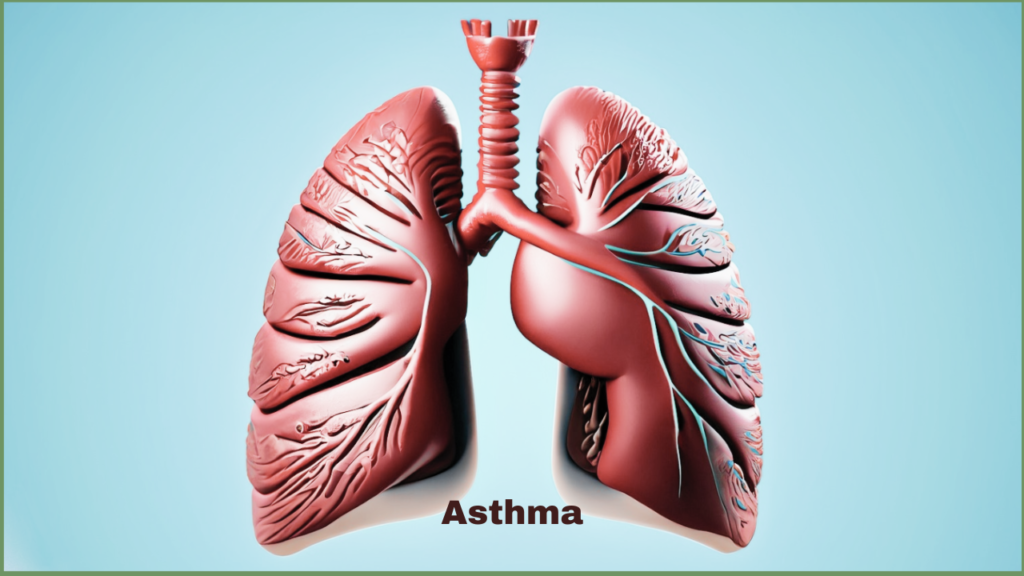Cough and bronchial asthma often lead to discomfort, with the primary goal being the elimination of foreign particles from the respiratory tract. This reflex occurs due to the receptors’ response to irritation in the throat, respiratory tract, or lungs. Coughs can be productive or non-productive. Productive coughs work to clear the airways, but excessive attempts to cough with reduced mucus can be harmful. A chronic respiratory disorder called bronchial asthma is characterized by inflamed airways, which frequently cause wheezing, dyspnea, chest tightness, and coughing attacks. People of various ages might be affected by this ailment, which has a substantial negative influence on quality of life. Better manage bronchial asthma, follow these steps:
Recognize the Symptoms: Familiarize yourself with the common signs of bronchial asthma, including wheezing, shortness of breath, coughing (especially at night or early morning), and chest tightness.
Know the Triggers: Understand what triggers your asthma symptoms, such as pollen, dust mites, pet dander, cold air, or exercise.
Seek Medical Diagnosis: If you suspect asthma, consult a healthcare professional for accurate diagnosis and proper management.
Table of Contents

Cough and Bronchial Asthma is a normal reaction that serves to rid our airways of foreign particles. Whether the cough is persistent or slight, it is critical to determine its cause in order to successfully treat it. Bronchial asthma, on the other hand, is a chronic respiratory disorder marked by airway inflammation and constriction, which causes trouble breathing. Allergic reactions, respiratory illnesses, exercise, and even emotional stress can all induce asthma episodes.
Coughs can have various origins:
- Pulmonary tuberculosis
- Cough related to asthma
- Gastroesophageal reflux
- Infections in the upper/lower respiratory tract
- Dripping from the nose due to sinusitis
- Chronic rhinitis

Effective treatment options for Cough and Bronchial Asthma:
- Expectorants
- Antitussives
- Auxiliary antitussives
- Demulcents
Expectorants help increase bronchial secretions, while antitussives suppress cough reflex or reduce both activities in the respiratory passages.
Bronchial stimulants like sodium or potassium citrate, toluka balsam, ammonium chloride, and potassium iodide are useful in increasing bronchial secretions.
Mucolytics, such as acetylcysteine, carbocisteine, and bromhexine, help to liquefy mucus, making it easier to clear the airways.
Antitussives are medications that act on the central nervous system (CNS) or peripheral nerves to increase the cough center’s threshold or reduce sensitivity in the respiratory passages.

Common anti-tussive drugs for Cough and Bronchial Asthma:
- Antihistamines like diphenhydramine, chlorpheniramine, and promethazine
- Opioids like codeine and pholcodine
- Non-opioids like clofedanol, dextromethorphan, and noscapine
Auxiliary antitussives like bronchodilators such as salbutamol and terbutaline help alleviate cough symptoms.
Demulcents, also known as cough suppressants, sometimes possess mucoprotective properties. They include natural ingredients like pectin, glycerine, honey, and syrups, as well as synthetic demulcents like methylcellulose, propylene glycol, and glycerine.
Codeine, an opiate, is often used to treat mild to moderate pain, cough, and diarrhea. It may be combined with nonsteroidal anti-inflammatory drugs (NSAIDs) like paracetamol or aspirin for better effects.
Noscapine (also known as narcotine) is a benzylisoquinoline alkaloid from the papaverine family, separated from various species of poppy. It lacks significant analgesic properties due to its weak narcotic receptor affinity.
Antihistamines provide relief in coughs due to their anticholinergic and antitussive actions, but their selectivity for the cough center is limited. They do not possess expectorant qualities and can even reduce airway flow through anticholinergic activity.
Auxiliary antitussives are a category of medicines that work alongside primary antitussives to help ease cough symptoms. While primary antitussives directly suppress the cough reflex, auxiliary antitussives contribute to overall respiratory relief by expanding the bronchi and bronchioles. By reducing resistance in the airways, they facilitate better airflow, making breathing more comfortable during cough episodes.
Bronchodilators, on the other hand, spread the bronchi and bronchioles, reducing resistance and increasing airflow in the respiratory passages.
We hope this information proves helpful in understanding and managing coughs and related conditions. Remember, seeking professional medical advice is essential for accurate diagnosis and personalized treatment.
Images Credits: Image by Freepik Image by brgfx on Freepik Image by Freepik




